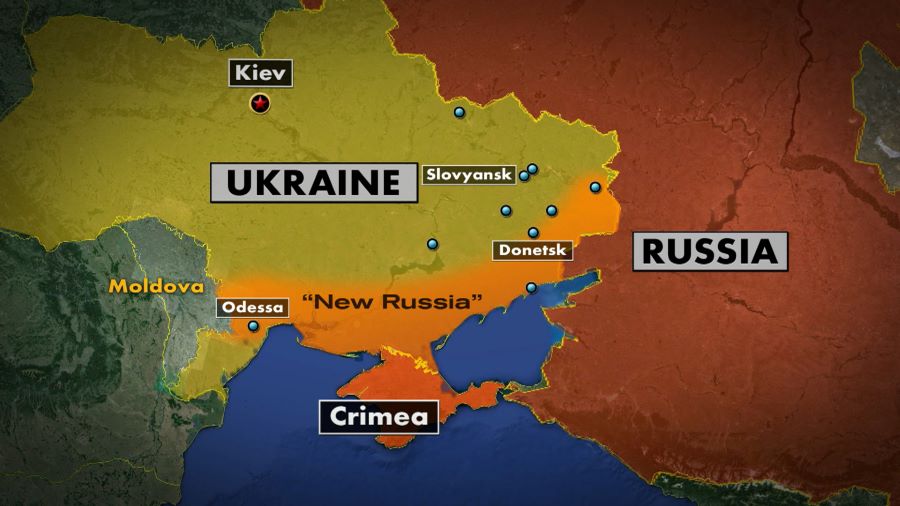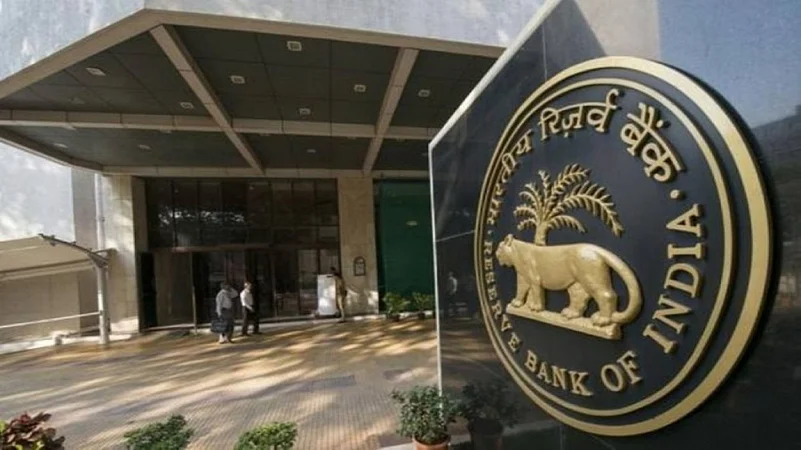Kathmandu-In a development that could reshape Nepal’s financial landscape, the Reserve Bank of India (RBI) has authorized Indian banks to extend loans to Nepali citizens and businesses, capping the initial phase at Rs 10 million per borrower. This unprecedented monetary policy shift comes just days after Nepal’s GenZ movement successfully brought down the government in a historic 27-hour demonstration.
The RBI’s October 1, 2025 decision extends similar credit facilities to Sri Lanka and Bhutan, marking a significant expansion of cross-border banking operations in South Asia. As Nepali businesses and individuals gain access to Indian bank loans, economists are debating whether this represents a golden opportunity or a potential threat to Nepal’s economic sovereignty.
Understanding the RBI’s Cross-Border Lending Policy
The Reserve Bank of India’s new directive fundamentally alters the banking relationship between India and its neighboring countries. This policy change deserves careful examination to understand its mechanics and implications.
Initial Lending Limits and Framework
The RBI has structured the program with conservative initial parameters:
- Maximum loan amount: Rs 10 million (Indian Rupees) per borrower
- Eligible countries: Nepal, Bhutan, and Sri Lanka
- Implementation date: October 1, 2025 (Asoj 15, 2082 BS)
- Borrower categories: Individual citizens and business entities
This measured approach allows the RBI to assess cross-border lending risks while providing meaningful credit access to neighboring economies.
Application Process and Requirements
While specific documentation requirements will vary by bank, Nepali borrowers seeking Indian bank loans will likely need:
- Valid citizenship documentation
- Business registration (for commercial loans)
- Income verification and financial statements
- Credit history assessment
- Collateral requirements as per bank policies
- Purpose of loan declaration
Expert Analysis: Positive Economic Impacts
Nepal’s financial experts have identified several potential benefits from this cross-border lending facility. Former Nepal Rastra Bank Executive Director Nar Bahadur Thapa provides crucial insights into the positive dimensions.
Foreign Exchange Relief During Crisis
“When the country is in an uncomfortable situation, the Reserve Bank of India’s lending initiative works well,” Thapa told Singha Darbar. “At a time when foreign currency is scarce and the balance of payments is in deficit, this facilitates imports of necessary goods for the people.”
This timing proves particularly relevant as Nepal navigates post-GenZ protest economic uncertainties.
Enhanced Import Capacity
The Indian bank credit facility addresses Nepal’s persistent foreign exchange challenges:
- Reduced pressure on Nepal’s forex reserves
- Smoother import financing mechanisms
- Better access to essential goods and raw materials
- Improved supply chain stability
Capital Injection for Development
Economist Analraj Bhattarai emphasizes the developmental opportunities: “Nepal is currently in a reconstruction phase and needs substantial capital for development. In such circumstances, having an additional source of funding is positive. This is more than what we asked for.”
The additional capital sources could accelerate:
- Infrastructure development projects
- Industrial expansion initiatives
- Technology upgrades and modernization
- Service sector growth
Fixed Exchange Rate Advantages
Nepal and India maintain a fixed exchange rate between their currencies, creating unique benefits:
“Nepal and Indian foreign exchange operate at a fixed exchange rate,” Bhattarai explains. “This eliminates exchange rate risk. This is an opportunity to take a leap. We must view this positively.”
The INR-NPR currency peg means:
- No currency fluctuation worries
- Predictable repayment amounts
- Simplified financial planning
- Reduced hedging costs
Economic Challenges and Risks Identified
Despite potential benefits, experts warn that Indian bank loans to Nepal carry significant risks that demand careful consideration and policy responses.
Threat to Domestic Production
Former Executive Director Thapa highlights a critical concern: domestic manufacturing could suffer as cheaper imports financed by Indian loans flood Nepali markets.
Production System Vulnerabilities:
- Local industries face unfair competition
- Manufacturing capacity may decline
- Technology development could stagnate
- Import dependency deepens
Employment Generation Concerns
If Indian credit facilities primarily finance imports rather than domestic production:
- Job creation in Nepal slows
- Youth unemployment persists
- Skill development opportunities diminish
- Migration pressures intensify
Widening Trade Deficit
Nepal already maintains a massive trade deficit with India. Additional import financing could exacerbate this imbalance:
Current Scenario:
- Nepal imports significantly more than it exports
- Foreign reserves under constant pressure
- Economic vulnerability to external shocks
- Limited export competitiveness
Potential Deterioration:
- Easier import financing increases purchases
- Export development receives less attention
- Trade gap widens further
- Economic dependency deepens
India’s Strategic Interests
Thapa candidly acknowledges India’s motivations: “This appears more in India’s interest than Nepal’s. There’s a desire for India’s dominance, India’s influence, production, and exports to flow smoothly into Nepal, Sri Lanka, and Bhutan. India’s objective is good industry, business, employment, and GDP.”
Understanding these geopolitical dimensions helps Nepal develop appropriate policy responses.
Impact on Nepal’s Banking Sector
The most immediate and visible effects of RBI’s cross-border lending policy will manifest in Nepal’s domestic banking industry, creating both competitive pressures and adaptation opportunities.
Competitive Pressure on Nepali Banks
“Now Nepal’s banks will have to sit with their hands tied,” warns former Executive Director Thapa. “After Indian banks start lending to Nepali businesses, Nepal’s banks might have to sleep through it.”
Banking Sector Challenges:
- Potential customer migration to Indian banks
- Pressure to reduce interest rates
- Need for improved service quality
- Investment in technology and infrastructure
- Enhanced customer service requirements
Liquidity Implications
The entry of Indian banking credit into Nepal’s market affects domestic liquidity dynamics:
“Liquidity will increase even more,” Thapa notes. “Now we must improve the economy, reduce the trade deficit, and increase exports.”
Liquidity Consequences:
- Excess liquidity in Nepali banking system
- Reduced lending opportunities for local banks
- Pressure on profit margins
- Need for new business models
Banking Sector Opportunities
Economist Bhattarai offers a more optimistic perspective: “Banking isn’t just limited to within the country anymore. Banks should view this as an opportunity to mobilize resources from outside the country.”
Strategic Opportunities for Nepali Banks:
- Correspondent banking relationships with Indian banks
- Co-lending arrangements
- Cross-border transaction services
- International banking expertise development
- Regional market expansion
Service Quality Imperatives
To compete with Indian banks offering loans to Nepalis, domestic financial institutions must enhance:
Customer Service Elements:
- Faster loan processing times
- Transparent fee structures
- Digital banking capabilities
- Personalized relationship management
- Industry-specific expertise
Product Innovation:
- Customized lending products
- Flexible repayment options
- Value-added financial services
- Risk management solutions
- Advisory capabilities
Legal and Regulatory Framework Considerations
For Indian bank lending to Nepali borrowers to function smoothly, Nepal must address several legal and regulatory dimensions.
Current Legal Gaps
Economist Bhattarai emphasizes legislative needs: “The process of amending the Banks and Financial Institutions Act (BAFIA) and the Nepal Rastra Bank Act is ongoing. It would be excellent if the law itself accommodates this facility.”
Legislative Requirements:
- Cross-border lending regulations
- Borrower protection provisions
- Dispute resolution mechanisms
- Tax treatment clarifications
- Reporting and compliance frameworks
Nepal Rastra Bank‘s Role
Nepal’s central bank faces critical policy decisions:
Regulatory Considerations:
- Monitoring cross-border credit flows
- Managing monetary policy implications
- Ensuring financial stability
- Protecting consumer interests
- Coordinating with RBI
Expanding Beyond India
Bhattarai advocates broader vision: “We should take this positively. Legal amendments are necessary. There should be arrangements to take loans not just from India but from other countries as well.”
Future Framework Elements:
- Multi-country lending facilities
- Standardized cross-border protocols
- Risk assessment methodologies
- Currency diversification strategies
- Regional financial integration
Historical Context: Nepal-India Financial Relations
The RBI lending facility isn’t entirely unprecedented in Nepal-India financial cooperation.
Previous Stand-By Arrangements
Former Executive Director Thapa references earlier cooperation: “Previously, Nepal Rastra Bank also arranged to take stand-by loans from the Reserve Bank of India. This facility is good.”
Historical Financial Cooperation:
- Currency swap arrangements
- Technical assistance programs
- Central bank coordination
- Crisis support mechanisms
- Knowledge sharing initiatives
Evolution of Banking Relations
Nepal-India banking relationships have evolved through several phases:
- Traditional phase: Limited formal cooperation
- Development phase: Technical assistance and training
- Integration phase: Currency agreements and swaps
- Current phase: Direct retail and commercial lending
Sector-Specific Implications
Different economic sectors will experience varying impacts from Indian bank credit availability.
Manufacturing and Industry
Opportunities:
- Capital for machinery purchases
- Working capital financing
- Technology upgrades
- Expansion funding
Risks:
- Financing imports instead of production
- Competition from Indian products
- Dependency on foreign capital
- Technology transfer limitations
Trade and Commerce
Benefits:
- Import financing facilitation
- Letter of credit alternatives
- Trade credit access
- Working capital solutions
Concerns:
- Widening trade imbalances
- Reduced export competitiveness
- Supply chain dependencies
- Payment security issues
Real Estate and Construction
Positive Aspects:
- Project financing availability
- Development capital access
- Infrastructure funding
- Housing finance options
Challenges:
- Asset price inflation risks
- Currency exposure on assets
- Regulatory compliance complexity
- Cross-border enforcement issues
Strategic Recommendations for Nepal
To maximize benefits while minimizing risks from Indian banks lending to Nepali citizens, experts recommend several strategic approaches.
Policy-Level Actions
Government Priorities:
- Accelerate legal framework development
- Establish monitoring mechanisms
- Create incentives for domestic production
- Develop export promotion strategies
- Strengthen regulatory capacity
Banking Sector Response
Strategic Imperatives for Nepali Banks:
- Invest in technology and digital banking
- Enhance customer service quality
- Develop specialized lending expertise
- Build international partnerships
- Focus on relationship banking
Business Community Adaptation
Entrepreneurial Strategies:
- Evaluate financing options comprehensively
- Consider long-term implications
- Build relationships with multiple lenders
- Focus on value creation
- Maintain diversified funding sources
Comparative Analysis: Regional Perspective
Nepal isn’t alone in receiving this RBI credit facility—Bhutan and Sri Lanka are also included.
Bhutan’s Position
Bhutan maintains even closer economic ties with India:
- Similar fixed exchange rate arrangement
- Smaller economy with different dynamics
- Strong hydropower export relationship
- Less diversified financial sector
Sri Lanka’s Context
Sri Lanka faces different circumstances:
- Recent economic crisis and restructuring
- More developed financial sector
- Greater economic diversification
- Different relationship dynamics with India
Nepal’s Unique Challenges
Nepal occupies a middle position:
- Larger population than Bhutan
- More complex political economy
- Significant remittance economy
- Geopolitical balancing acts
The Bottom Line: Opportunity or Threat?
The Reserve Bank of India’s decision to allow lending to Nepali citizens represents a double-edged sword for Nepal’s economy. The outcome will largely depend on how Nepal’s government, banking sector, and business community respond to this new reality.
Short-Term Outlook
In the immediate future, expect:
- Increased credit availability for businesses
- Competitive pressure on Nepali banks
- Enhanced import financing capacity
- Regulatory framework development
- Market experimentation and learning
Long-Term Considerations
Over time, success or failure hinges on:
- Legal and regulatory framework adequacy
- Nepali banking sector competitiveness
- Export development and trade balance
- Domestic production system strength
- Economic policy coordination
Critical Success Factors
For Nepal to benefit from Indian bank loans while protecting its interests:
- Strong regulatory oversight ensuring fair practices
- Competitive domestic banking providing alternatives
- Export-oriented policies reducing trade deficits
- Investment in production rather than just consumption
- Regional cooperation balancing relationships
As this new chapter in Nepal-India financial relations unfolds, one thing remains clear: Nepal must approach this opportunity with both enthusiasm and caution, ensuring that increased credit access translates into sustainable economic development rather than deepened dependency.
Image Alt Texts:
- “Reserve Bank of India allows loans to Nepali citizens businesses economic impact”
- “Indian banks lending to Nepal cross-border financial services South Asia”
- “Nepal banking sector competition with Indian banks loan services”
- “Nepali businesses accessing Indian bank credit facilities opportunities”
- “Nepal economy foreign exchange reserves trade deficit Indian loans impact”
Word Count: 2,089 words




















Comments